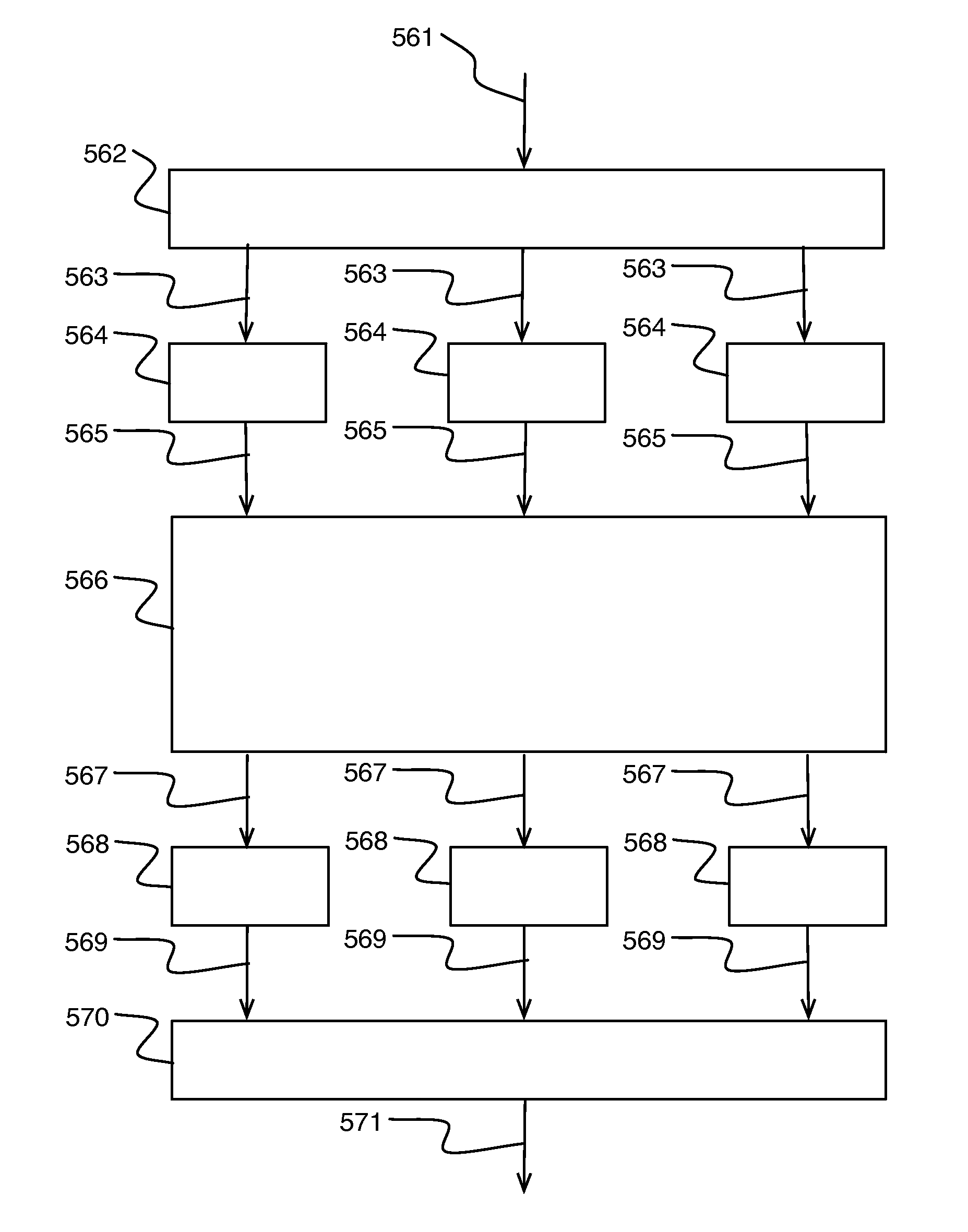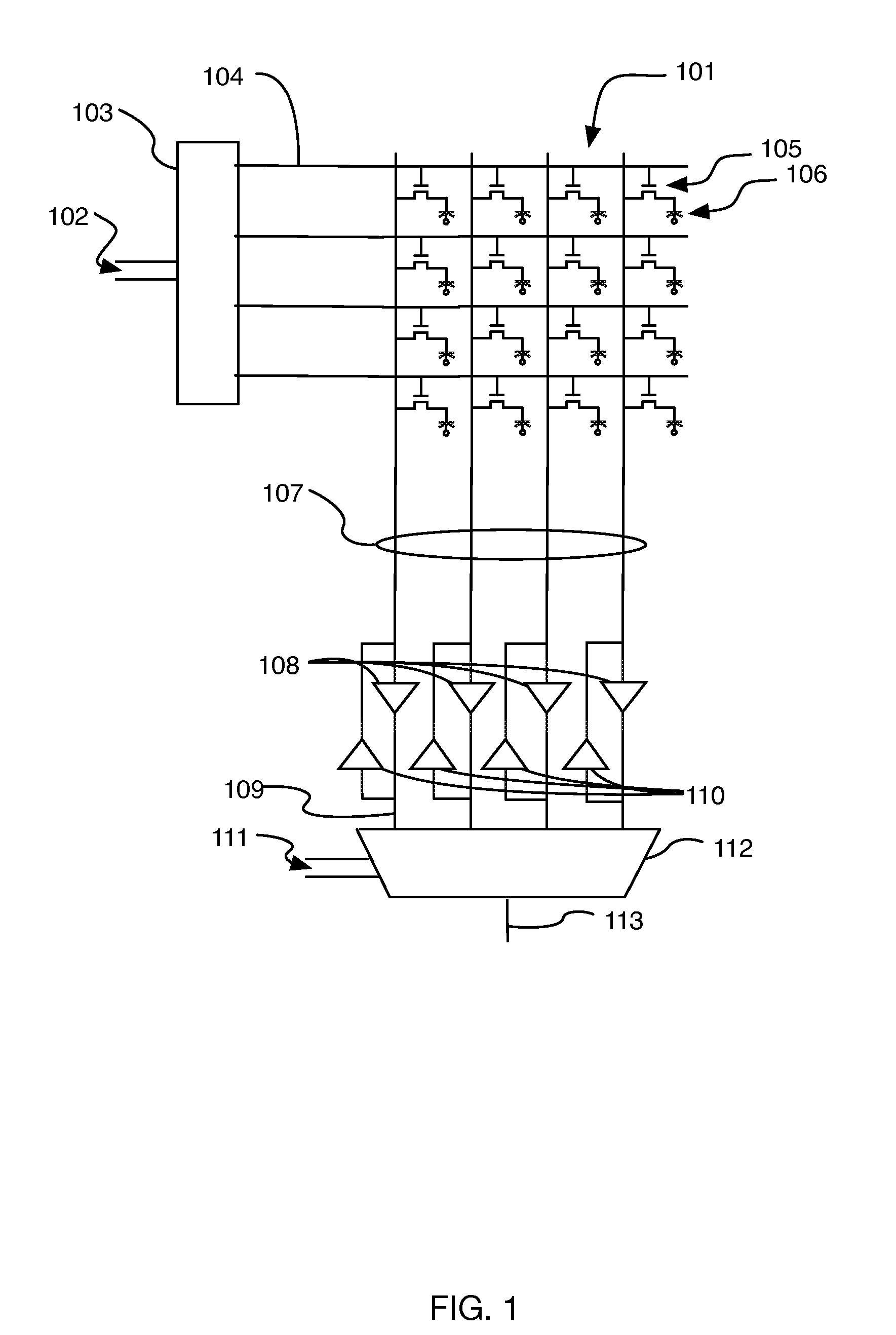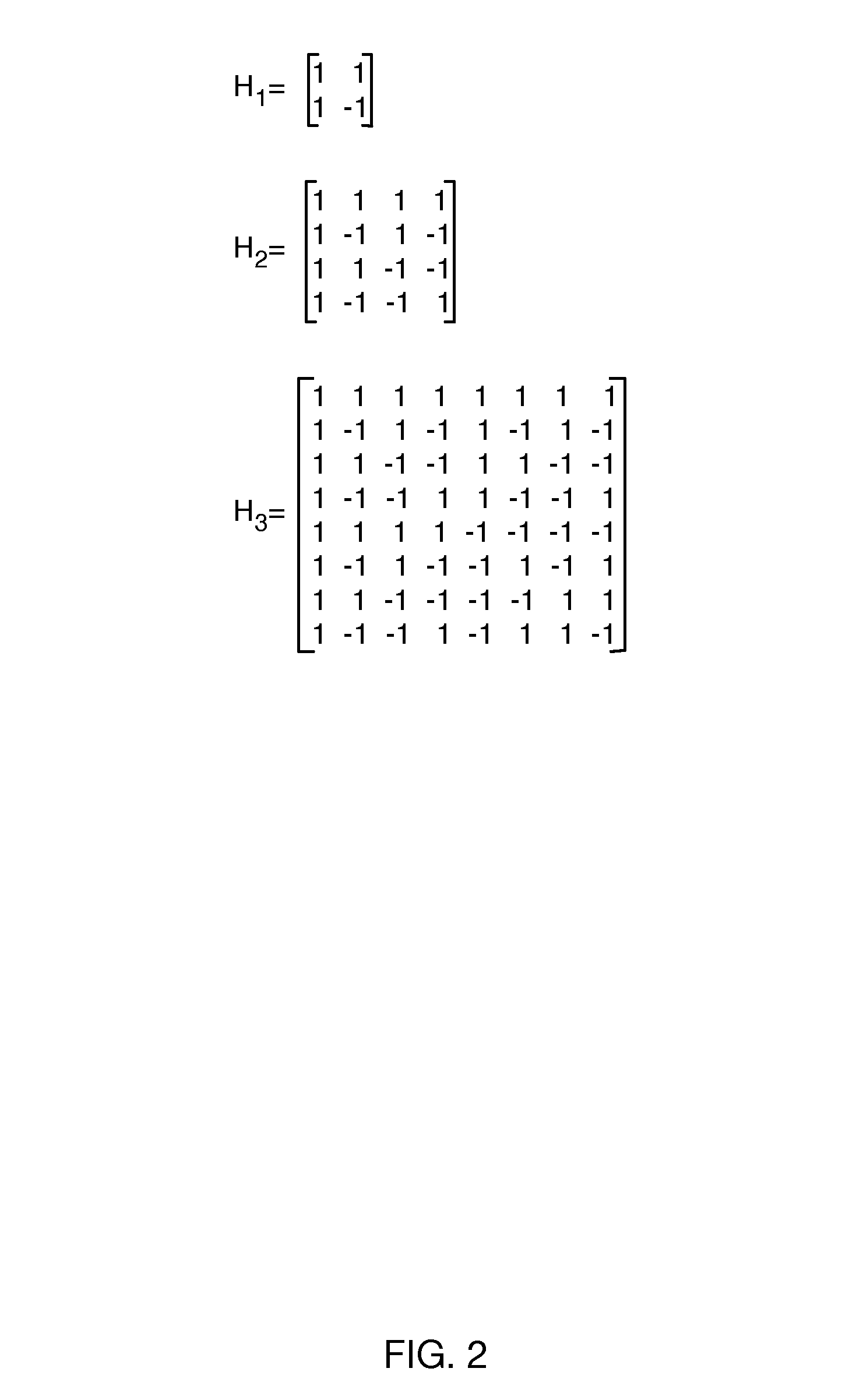Storage method and apparatus for random access memory using codeword storage
a random access memory and codeword technology, applied in the field of structured storage, can solve problems such as the reduction of the signal output of a read operation
- Summary
- Abstract
- Description
- Claims
- Application Information
AI Technical Summary
Benefits of technology
Problems solved by technology
Method used
Image
Examples
Embodiment Construction
[0021]In embodiments of a memory circuit described herein, data is stored into memory, such as an embedded dynamic random access memory (“DRAM”) device. Since the device is random access, it has a plurality of addressable storage locations and thus a write operation involves providing the device with a selection of an addressable storage location and write data, whereas a read operation involves providing the device with a selection of an addressable storage location and obtaining therefrom the read data.
[0022]FIG. 1 illustrates a conventional dynamic memory array architecture that operates in this manner. Generally, the memory is organized as a two-dimensional array of M×N storage cells, for some integers M and N. Each storage cell typically comprises a cell select transistor 105 and a capacitive storage element 106, as illustrated. The address of the selected memory location can comprise a binary value of some fixed number of bits (e.g., log2(M*N) with M and N being integer powers...
PUM
 Login to View More
Login to View More Abstract
Description
Claims
Application Information
 Login to View More
Login to View More - R&D
- Intellectual Property
- Life Sciences
- Materials
- Tech Scout
- Unparalleled Data Quality
- Higher Quality Content
- 60% Fewer Hallucinations
Browse by: Latest US Patents, China's latest patents, Technical Efficacy Thesaurus, Application Domain, Technology Topic, Popular Technical Reports.
© 2025 PatSnap. All rights reserved.Legal|Privacy policy|Modern Slavery Act Transparency Statement|Sitemap|About US| Contact US: help@patsnap.com



